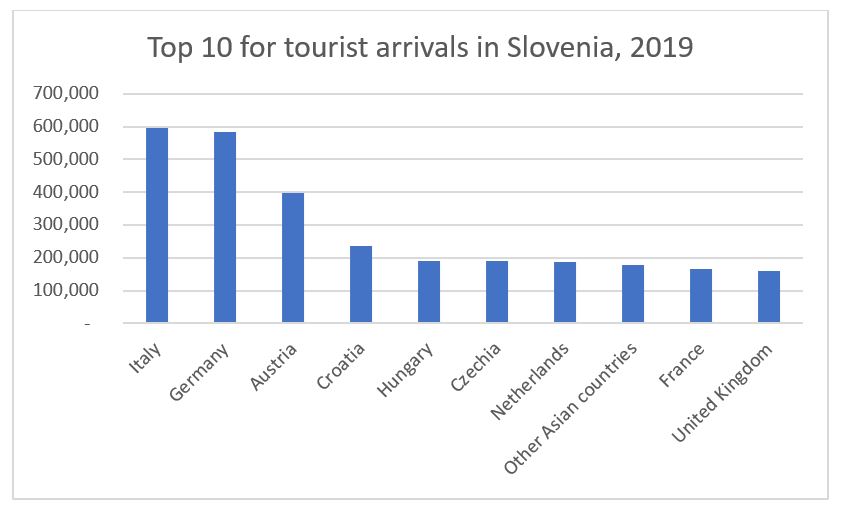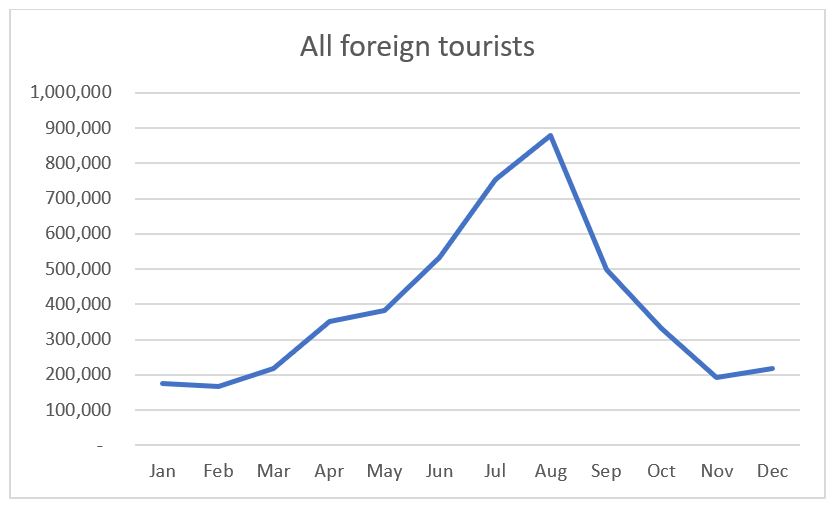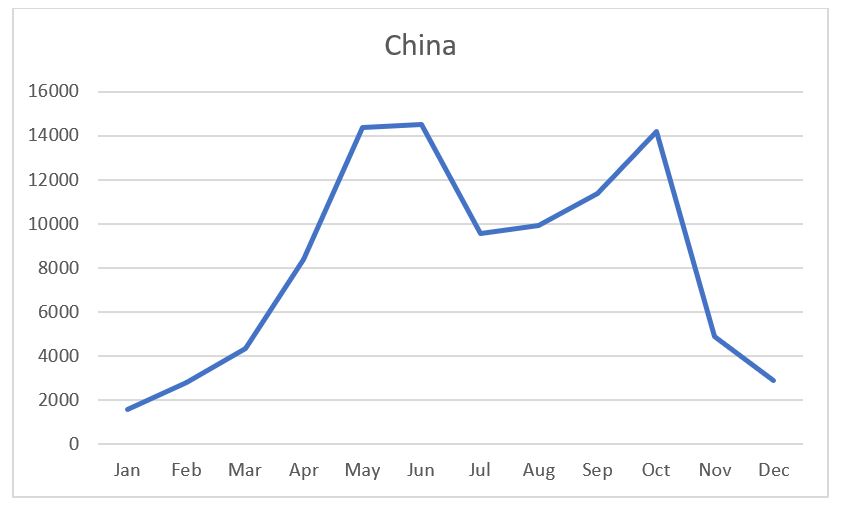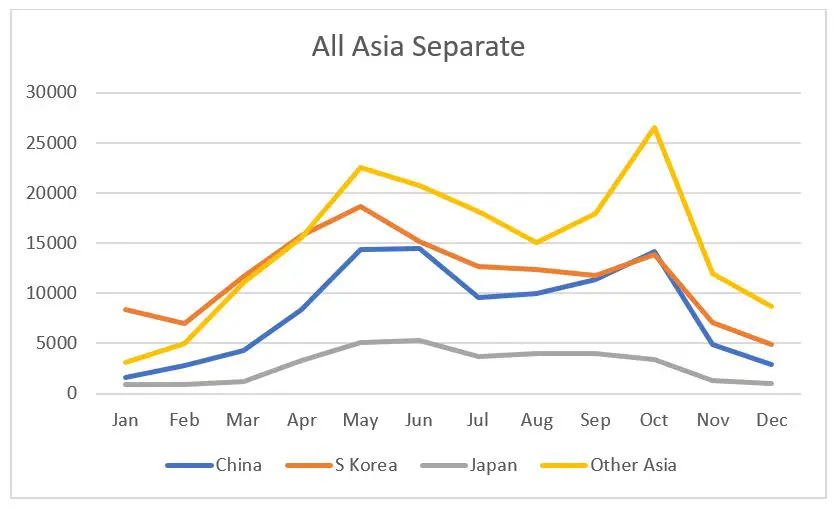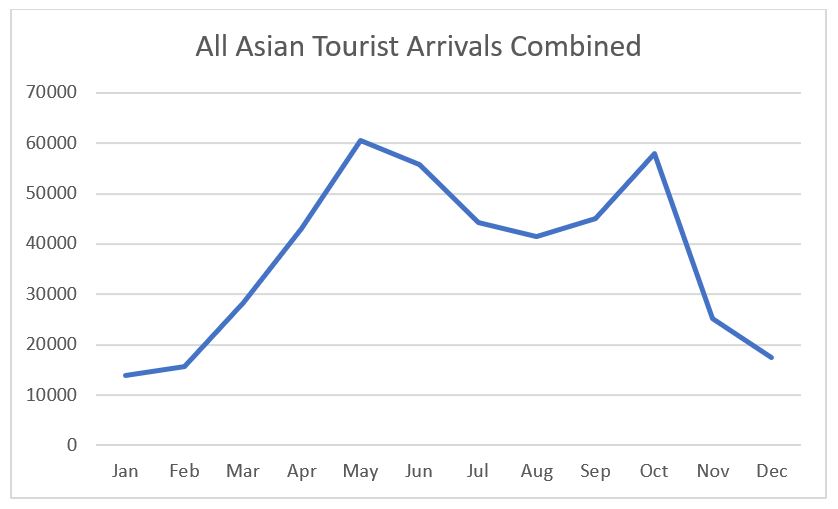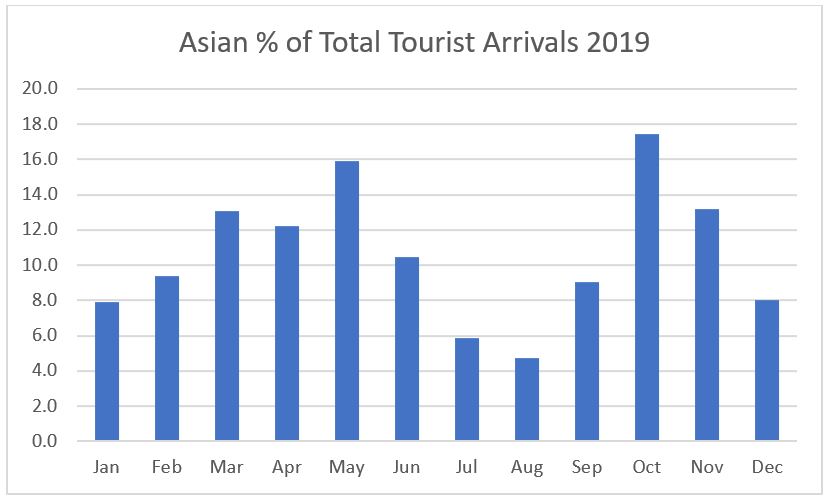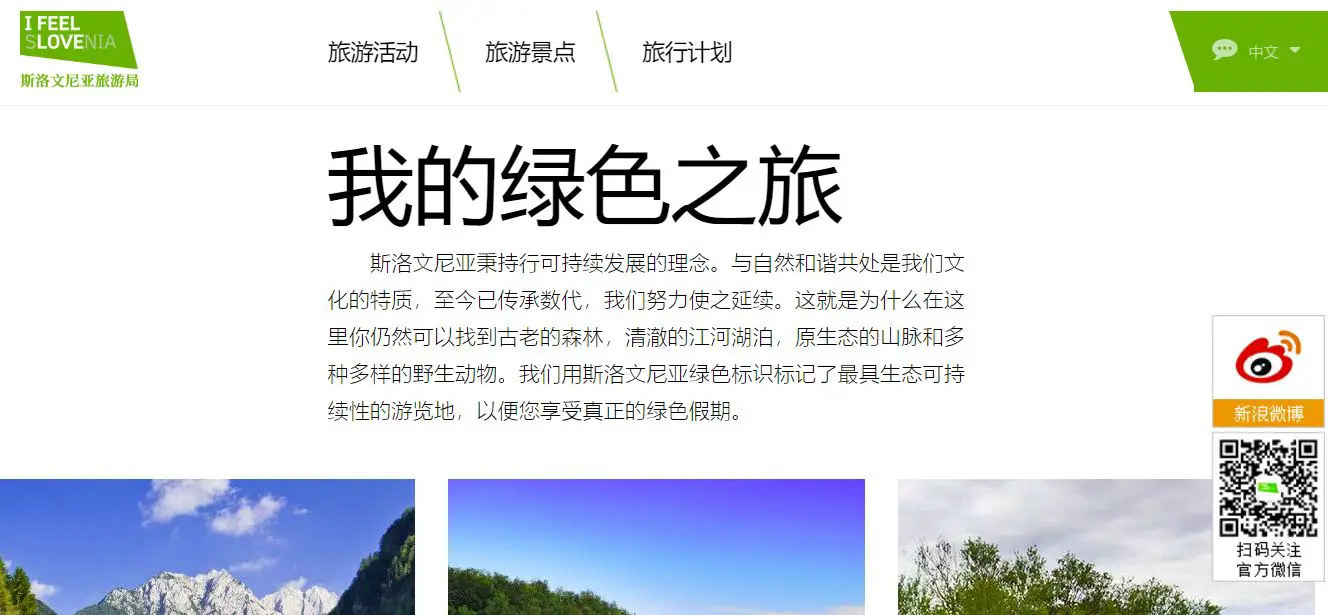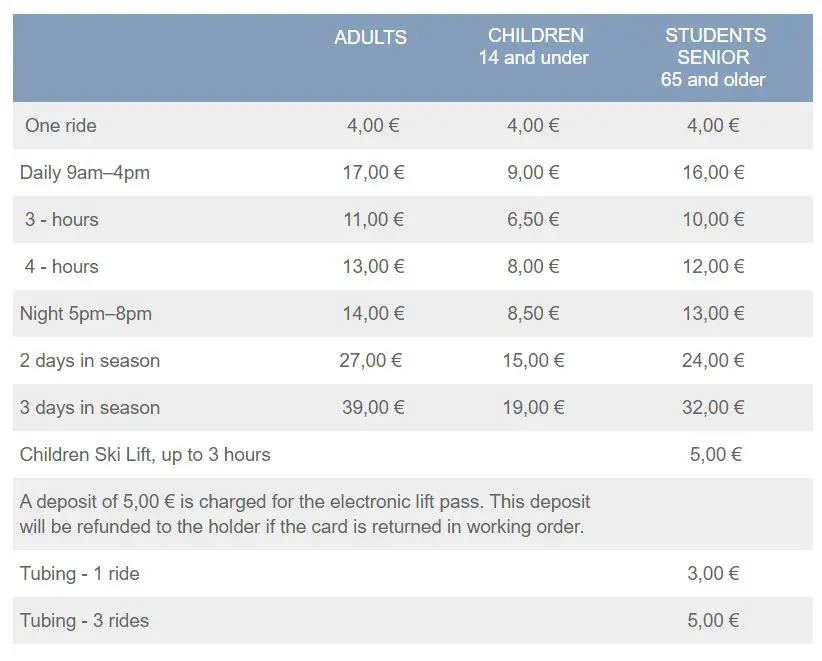Travel
Royal Bled already appears on the list of the best and most beautiful golf courses in the region of Europe, North Africa and the Middle East, and now it has another recognition, named as among golfscape’s top 100 courses in the world. The largest and oldest course in the country comes in at #86, just after The Blue Monster at Trump National Doral Miami, USA, and before Golf de Spérone, France.
Once again it’s the beauty of the area that catches the imagination of the authors, with the report noting “the course is flanked by towering mountains and the impressive valleys of the Alps. With excellently manicured grounds, many hail it as one of the most beautiful courses in all of Europe.”
If you’d like to play a round at Royal Bled then note that it’s open from March to November, with both 18- and 9-hole course, and due to its status and appeal is one of the pricier golfing options in the country – but you get what you pay for. The website is here, while our look at all the 6-, 9- and 18-hole courses in Slovenia is here.
As reported by Ex-Yu Aviation, Qatar Airways is planning to hire cabin crew based in Slovenia, Bosnia and Herzegovina, Serbia and Montenegro, with registration for Slovenia and Serbia required by February 15. You can apply online, and applicants who make it to the shortlist will then be invited to an open day in Ljubljana, the date of which remains to be announced.
While the news does suggest the airline could soon start flights between Ljubljana and Doha, something it’s been considering since 2017, as yet nothing is scheduled and no contracts signed.
Those interested in the positions, which despite the picture in the hiring ad, as shown at the top of this page, is open to both men and women, must meet the following requirements:
- Minimum of 21 years old
- Minimum arm reach of 212 cm
- High school diploma
- Fluency in written and spoken English
- Outgoing personality with excellent interpersonal skills.
- Ability to work within a multinational team
- A love of travel
- Passionate about customer service
- Excellent health and fitness
- Willingness to relocate to Doha, Qatar
More details can be found here.
After some years of plans that remained unrealised, Ex-Yu Aviation reports that the Ukrainian carrier Windrose Airlines is to start flights between Kiev and Ljubljana this summer. The service starts on 30 April and will operate twice weekly, on Tuesday and Sunday, with the schedule set to end in October, unless demand is greater than expected in the low season. The flights are scheduled to leave Kiev at 11:10 and arrive in Ljubljana 12:10, while they’ll take off from Slovenia at 12:50 and touchdown in Ukraine at 16:10.
SURS just released the full tourist figures for 2019, and although we already published a summary we thought we’d dig a little deeper into the data, to find some other trends and points of interest, with the top 10 nations for the year shown below (and the full list at the end of the story).
*Other Asian countries includes all Asian nations other than China, Japan and South Korea
When looking at the monthly data for all foreign tourists, the first thing to note is the extreme seasonality of such visits. The lowest figure, 167,689, was for February, while the highest, 879,291, was in August, with June to September all months with more than a half a million arrivals.
Of course, given the habit of summer vacations, and the fact that most visitors are from Europe, this isn’t surprising. But what about places with other traditions? The data for North East Asia – China, S Korea and Japan – shows a different picture, as does that for Other Asian countries (such as India, which isn’t yet pulled out of the data on its own) .
Related: Chinese Tourism Booming in Slovenia, Ex-Yugo Nations
Looking at China alone and there are two peaks, either side of the August one for tourism in general, with a very off-trend spike in October. It’s much the same story elsewhere in Asia, as seen below in a chart for China, South Korea, Japan and “Other Asia”. All have peaks outside the high summer, in late spring and – with the exception of Japan – in autumn, too.
Combining all the numbers in the chart above gives the following for the whole of Asia.
This line can then be overlaid on the one for the whole world, producing the following image.
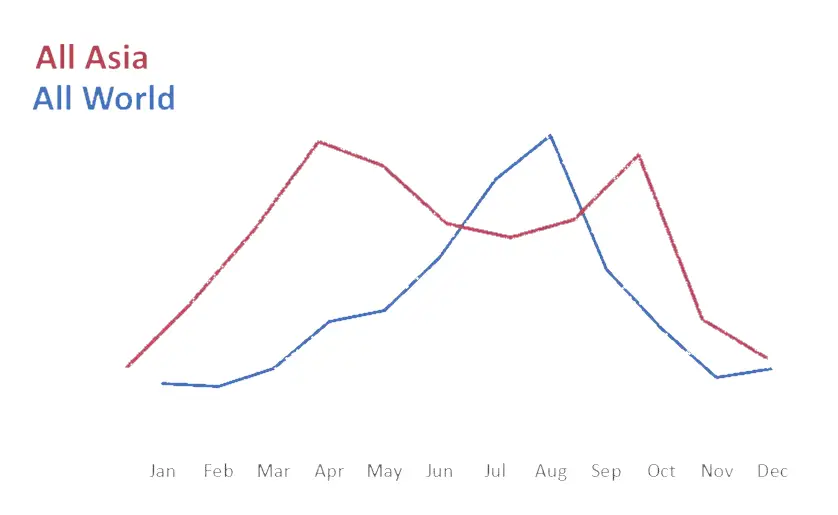
Finally, I took a look at the percentage of tourist arrivals from all of Asia by month, with it being 9.5% for the whole. There are two months where such tourists account for more than 15% of the total, in May (15.9%) and October (17.4%).
The data thus suggest that one way to reduce the seasonal nature of tourism in Slovenia, and the trade in related goods and services, would be to continue and extend efforts promote the country as a destination in Asia, as tourists from this region tend to avoid the peak summer months and arrive out of season. You can learn more and play around with the SURS data here.
The full list of nations and regions for which data on tourist arrivals in 2019 is available is shown below.
| Italy | 597,553 |
| Germany | 584,837 |
| Austria | 396,527 |
| Croatia | 235,020 |
| Hungary | 190,980 |
| Czechia | 189,829 |
| Netherlands | 186,721 |
| Other Asian countries | 176,454 |
| France | 166,870 |
| United Kingdom | 159,720 |
| United States | 148,751 |
| Serbia | 144,850 |
| Korea (Republic of) | 139,451 |
| Poland | 132,601 |
| Belgium | 113,871 |
| China | 98,975 |
| Spain | 88,138 |
| Switzerland | 78,696 |
| Bosnia and Herzegovina | 72,112 |
| Russian Federation | 69,868 |
| Slovakia | 64,758 |
| Israel | 59,615 |
| Romania | 57,095 |
| Australia | 53,732 |
| Ukraine | 44,114 |
| Bulgaria | 38,015 |
| Sweden | 36,864 |
| Canada | 35,069 |
| Japan | 33,918 |
| Turkey | 28,048 |
| Other countries of South and Middle America | 26,248 |
| Denmark | 25,881 |
| Other European countries | 25,732 |
| Finland | 25,538 |
| North Macedonia | 22,543 |
| Ireland | 21,358 |
| Brazil | 16,755 |
| Portugal | 16,283 |
| Norway | 14,438 |
| Montenegro | 13,307 |
| Greece | 12,374 |
| New Zealand | 10,009 |
| Other African countries | 8,927 |
| Lithuania | 8,178 |
| Malta | 6,899 |
| Latvia | 6,890 |
| Estonia | 5,406 |
| South Africa | 4,490 |
| Luxembourg | 3,941 |
| Iceland | 2,953 |
| Cyprus | 1,227 |
| Other countries of Oceania | 396 |
STA, 31 January 2020 - Some 6.2 million tourists visited Slovenia last year, a 5% increase compared to 2018. The number of overnight stays grew 0.6% to roughly 15.8 million, shows Statistics Office data released on Friday.
The number of Slovenian tourists increased by 1.3% to 1.5 million, while the number of foreign tourists grew by 6.3% to 4.7 million.
The bulk of the foreign tourists came from Italy, Germany and Austria, but while Austrians opted more often for holidays in Slovenia (up 10.7%), Italians were less likely to visit the country (down 8.5%).
Meanwhile, the number of tourists in December 2019 was on par with the year before. On the other hand, the number of overnight stays decreased by almost 9%.
The Christmas holiday season attracted foreign tourists mostly from Italy (26% of the foreign tourists), Austria (11%), Croatia (10%), Germany (6%) and Serbia (5%). Spas, the Slovenian Alps, the capital and the seaside were top destinations at the end of 2019.
Related: Where Did the Visitors to Slovenia Come from in August 2019?
STA, 29 January 2020 - This year's winter season has already seen more than 35 mountaineering accidents in which four persons have lost their lives. The number of such accidents has been gradually growing in recent years, with 604 rescue missions in total needed last year.
Jani Bele of the Slovenian Mountain Rescue Association said at Wednesday's press conference in Kranj that the number of mountaineering accidents had been growing year-on-year.
Last year, more than 40 people died in the mountains, half of them mountain climbers. Apart from mountaineering, paragliding, water sports and cycling have turned out to be the most risky sports activities.
Related: Police Stop Hikers for Wearing the Wrong Shoes
The number of mountain search and rescue missions has been gradually increasing since 2013 when the figure stood at 392. In 2017, the number exceeded 500 and climbed to 537 a year later.
The head of the police mountain rescue unit Robert Kralj expressed hope that this surge would be halted this year. A 30% increase has been recorded so far in 2020 though.
The Slovenian Alps are a popular destination, including for tourists who are not familiar with the area or underestimate the terrain, going as far as throwing caution to the wind to get a perfect selfie.
Apart from slipping and falling from great heights, avalanches pose another grave risk, said Bele, urging hiking or skiing on marked trails and in designated areas with adequate equipment.
STA, 23 January 2020 - Around 1.34 million tourists visited Ljubljana Castle, one of the most popular Slovenian sights, in 2019, when the castle area offered more than 600 various events.
Among the visitors recorded on the basis of tickets sold, nearly 76% came from abroad, foremost Italy, the UK, Germany, the US, South Korea, France and Spain.
The funicular transported over 590,000 visitors from the city to the castle last year, up 9.5% over 2018, the public institute running the castle has said in a release.
A milestone came on 5 April, when the 4 millionth visitor was taken to the castle since the funicular was launched at the end of 2006.
The castle featured 610 events, including an exhibition of acclaimed costume designer Alan Hranitelj, which earned him one of this year's national Prešeren Fund Prizes.
The castle's cafe and the gallery were renovated and a new permanent exhibition on castle weapons launched.
A new wine cellar opened as wine from the castle's vineyard was bottled for the first time last year.
The castle organised over 1,200 various guided tours for more than 17,600 visitors.
Its Escape Castle, an adventure game modelled on escape room experience, was played by almost 6,200 people.
Ljubljana Castle plans to launch a new tourist product involving wine this year as a prelude to Slovenia turning into the European Region of Gastronomy in 2021.
This week is Chinese New Year, so what better time to read about the growth of Chinese tourism in Southeastern Europe? Dragon Trail has an interesting article titled “The Southeastern Europe Chinese Tourism Boom”, by Sienna Parulis-Cook. It looks at recent trends in travel from the Middle Kingdom to this part of the world, and the states of the former Yugoslavia in particular.
"My Green Travel" -Slovenia has a Chinese website
It notes that the region has seen some of the world’s highest growth rates for Chinese tourism in recent years, with Montenegro more than doubling its tourism numbers in the first nine months of 2019, while in the first half of the year Slovenia saw 46,032 arrivals and 71,571 overnight stays by Chinese tourists, up by 22.5% and 37.6%, respectively. To put those numbers in context, the entire Chinese outbound tourism market grew by just 12% in 2019.
Two of the most viewed Chinese language videos on Slovenia on YouTube
Why such growth? One reason is the ease of visa-free entry in Serbia and Bosnia-Herzegovina, and the fact that both Croatia and Montenegro allow entry to anyone holding a Schengen visa, while Slovenia is already within the free movement zone. Another is the growing business connections between the region and China, most notably via the Belt & Road Initiative to link Eurasia and Africa, with Southeastern Europe being a key route to Northern Europe.
A third is the growing sophistication of Chinese travellers. While those coming to Slovenia are likely still travelling in groups, they’ve probably already been to the AAA must-see sights and cities in Europe – with Paris now receiving some one million Chinese tourists a year. Lesser known destination are thus the new frontier, and with such travellers are said to be less interested in shopping for top brands in luxury stores than in having experiences in terms of culture and outdoors. And as Ana Špik, who works for the Slovenian Tourist Board, notes, Slovenia is increasingly popular for Chinese pre- and post-wedding photography, so it’s also attracting more couples.
The whole article contains a lot more of interest, on Slovenia and the wider region, and can be read here.
STA, 20 January 2020 - National motorway operator DARS sold toll stickers (vignette) worth EUR 195 million between 1 December 2018 and 30 November 2019, up almost four percent over the year before, as revenue across all segments rose.
The period roughly covers the validity of annual toll stickers, but DARS also sells monthly and weekly toll stickers, which are mostly used by tourists and for transit.
The company generates the bulk of toll revenue for personal vehicles from annual toll stickers, of which it sold more than 883,000 in this period, up 4% year-on-year.
Volume-wise the biggest seller were monthly toll stickers for cars, of which 1.5 million were sold, an increase of 3%.
In general toll-sticker revenue account for a smaller portion of total revenue than toll for lorries.
Learn more about the toll stickers at DARS
STA, 18 January 2020 - Intercontinental Ljubljana, the Slovenian capital's sole five-star hotel, is exceeding the expectations of its owner. Opened in August 2017, it has a higher-than-planned occupancy rate and it is among the best rated hotels in the group worldwide, according to general manager Miloš Cerović.
The EUR 42 million investment was initially expected to have a payback period of 16-18 years, but after two years of operation it is now closer to 13 and Cerović believes they could reach the point even sooner. "Before coming to Ljubljana the investor did its homework," he told the STA about the Serbian group Delta Holding.
Occupancy rate went from 65% in 2018, "extraordinary for a newly opened hotel," to 75% in 2019. "We're in no way behind the competition when it comes to occupancy but our prices are almost 70% higher. This shows how large the market for five-star hotels is in Ljubljana and how much people are willing to pay for quality."
Cerović considers Intercontinental "a pioneer of luxury tourism" in the Slovenian capital which has blazed the trail by showing other investors that this business pays.
He also thinks each hotel needs to have its identity and concept and is a big advocate of hotel chains. "It's not the same if you have an unrecognised hotel or one of the world brands. A brand places Ljubljana on the world map, which attracts other investments as well as new airlines."
In the coming years Intercontinental Ljubljana wants to improve occupancy and raise prices, but in order to do that the competition must follow suit.
"We have a product that we could sell for 600 pounds in London and 500 euros in Paris, but here we cannot even set the price at 200 euros. This is also the consequence of a small and undeveloped market. I therefore urge my colleagues not to be afraid to raise prices," he said.
According to Cerović, tourists still see Ljubljana as a low-cost destination with cheap restaurants, limited entertainment options, a city dominated by three- or four-star hotels.
Ljubljana does not need to become a luxurious or boutique destination, it does however need to have clear goals. "There should not be three- or four-star hotels in the very centre of the city... There are places that are not five-star destinations, but it is clear what the hotels in the very centre are like."
He also thinks the city needs a clear vision to extend the tourism season to the whole year. Currently, the majority of guests arrive from May to October and in the off-season everyone is drawing from the same limited supply of guests, competing on price.
"Everyone thinks the only way to attract guests is with a lower price. We're not getting into that. We have quality, products and service, and this is the basis of our offer. The impact [of price competition] on the market is very detrimental."
Riding on the success of Intercontinental Ljubljana, Delta Holding is already drawing up plans to launch a four- to five-star hotel that would operate under the Holiday Inn brand. Cerović said this would be a futuristic, technological hotel that would open in 2021 or 2022.
You can now add another thing to the list of things to do in Bled, with the ski slope Straža Bled opening tomorrow, 18 January 2020. At weekends the opening hours are from 09:00 to 16:00, with night skiing an option from 17:00 to 20:00, while on weekdays there’s only night skiing, the same time as Saturday and Sunday.
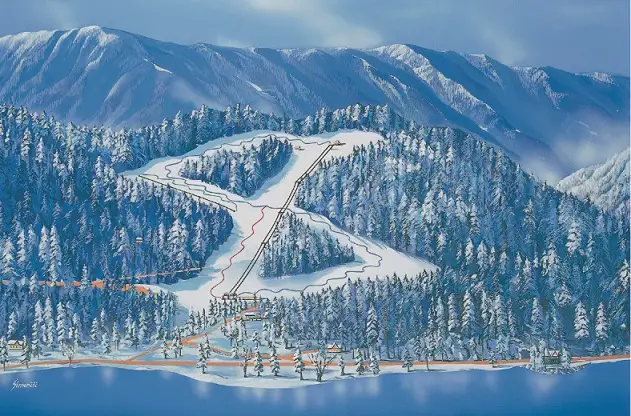
You can also go to Bled, park you car, and take the ski bus to Vogel and Pokljuka, while the Julian Alps International Ski Pass gives holders access to 14 resorts in three countries and more than 260 km of ski runs at: Soriška planina, Krvavec, Kranjska Gora, Cerkno, Kanin/Sella Nevea (Slovenia), Tarvisio, Sella Nevea/Kanin, Zoncolan, Pinacavallo, Forni di Sopra, Sappada, Sauris (Italy), 3ländereck, Innerkrems and Goldeck (Austria). This pass means you can use the Bled winter shuttle transport from Bled to Krvavec, Kranjska Gora, Tarvisio (I) and 3ländereck (A) free of charge.


